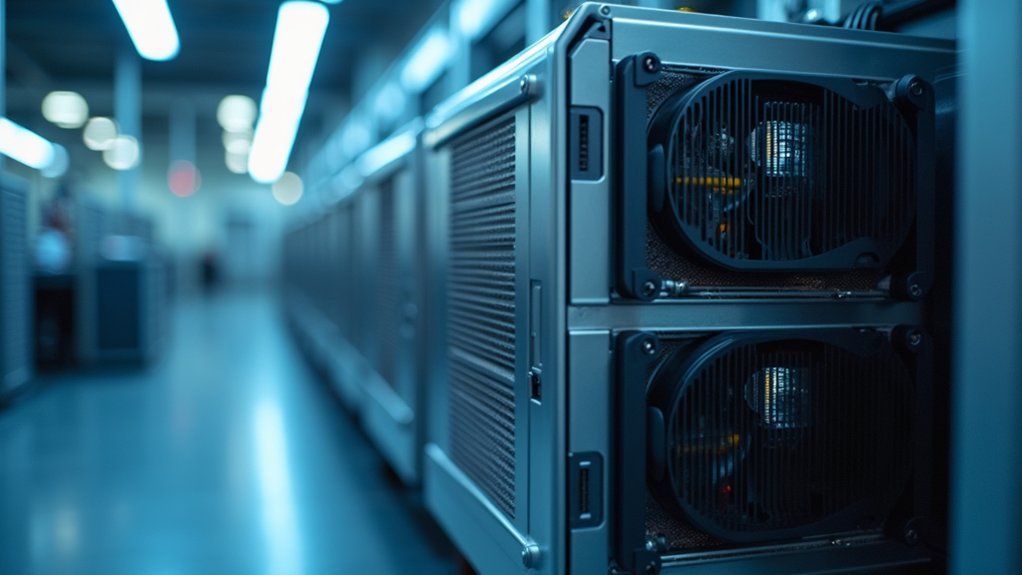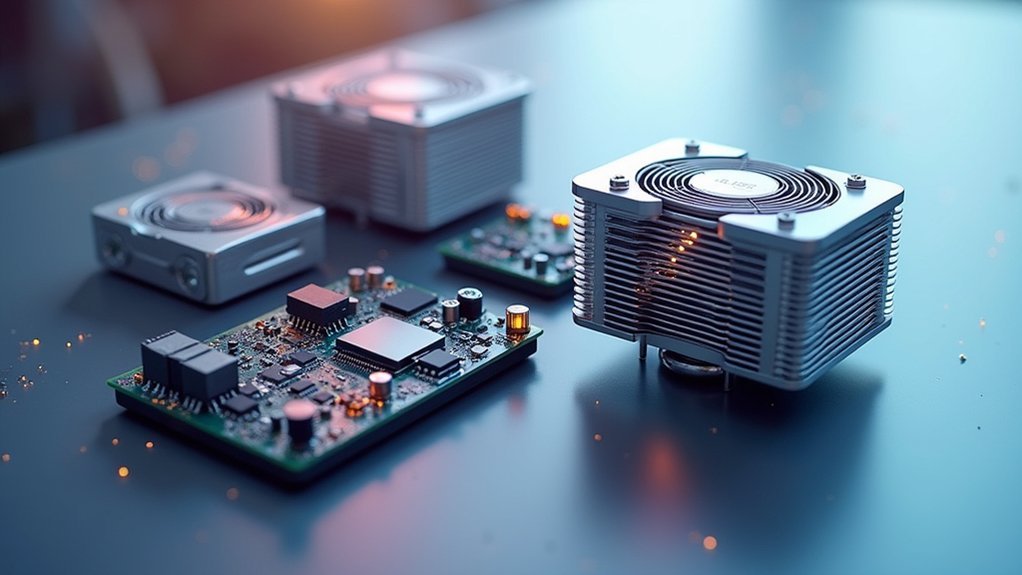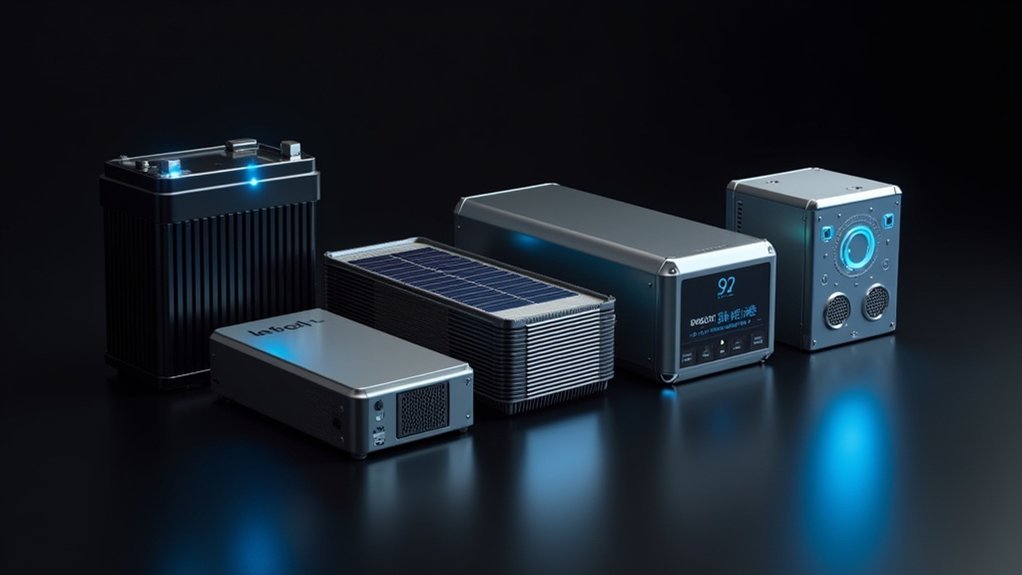The 5 best power solutions for sensor cooling systems include uninterruptible power supplies for stable temperature control, energy-efficient power management with active power factor correction, advanced thermal regulation systems, low-noise power distribution (under 1mV ripple), and compact modular power solutions. You’ll benefit from consistent cooling performance, reduced energy costs, and enhanced measurement precision for your sensitive instruments. Discover how these specialized power technologies can dramatically extend your equipment’s lifespan and reliability.
Uninterruptible Power Supplies for Microscope Sensor Cooling

Because microscope sensor cooling systems rely on consistent temperature control, uninterruptible power supplies (UPS) serve as the backbone of their operational integrity.
You’ll need to select a UPS with sufficient capacity to meet your cooling system’s power requirements, guaranteeing continuous operation during outages that could otherwise compromise sensitive samples.
Opt for high-efficiency UPS solutions with excellent power usage effectiveness ratings to minimize energy waste in your lab environment.
Energy-efficient UPS systems not only protect your lab’s integrity but also reduce environmental footprint and operational expenses.
These modern backup power systems integrate seamlessly with advanced cooling technologies while reducing environmental impact and operational costs.
Don’t overlook regular maintenance and testing protocols for your UPS.
Proper upkeep guarantees reliable temperature monitoring and prevents cooling system failures that could damage expensive microscopy equipment and invalidate research data.
Energy Efficiency in Camera Cooling Power Management
While UPS systems protect against power interruptions, the efficiency of your camera cooling system’s everyday power consumption directly impacts both operating costs and equipment longevity.
Implementing active power factor correction in your power management strategy can greatly reduce wasted energy while enhancing overall system performance.
You’ll benefit from integrating smart sensors that provide real-time data analytics on temperature and humidity conditions, potentially reducing energy consumption by up to 30%.
Consider modular power supplies for your cooling systems, allowing you to scale power requirements as your operational needs evolve.
Don’t overlook compliance with standards like DOE Level VI when selecting power solutions.
These energy efficiency requirements guarantee top performance of your camera cooling equipment while contributing to sustainability goals and minimizing heat-related failures that could compromise your imaging results.
Thermal Regulation Systems for Precision Imaging

Since precision imaging equipment requires exacting temperature control, implementing advanced thermal regulation systems isn’t just beneficial—it’s crucial. Your imaging sensors demand efficient cooling solutions that stabilize operating temperatures to prevent image distortion and extend equipment lifespan.
Active cooling methods like liquid cooling and thermoelectric systems provide superior power efficiency while rapidly dissipating heat from sensitive components.
You’ll find that integrating real-time monitoring through smart sensors optimizes your temperature management by adapting to changing operational demands.
When designing your thermal regulation infrastructure, prioritize systems that maintain consistent temperatures under varying workloads.
The right advanced cooling technology not only prevents overheating but also enhances your imaging quality and reliability.
Remember that effective thermal management directly correlates with the precision and durability of your imaging equipment.
Low-Noise Power Distribution for Sensitive Microscopy
The precision demands of thermal regulation in imaging systems extend directly to power management for microscopy applications.
Thermal precision in imaging systems demands equally exacting standards in microscopy power management solutions.
You’ll need low-noise power distribution systems with ripple specifications below 1mV to prevent interference with your sensitive measurements.
When selecting power supplies, prioritize those with advanced thermal management features that prevent thermal drift in high-resolution imaging.
Look for solutions incorporating active power factor correction, which enhances energy efficiency while minimizing electromagnetic interference that could compromise your results.
For maximum performance in demanding research environments, consider custom-engineered power supplies tailored to your specific voltage and current requirements.
These specialized solutions guarantee reliable operation of your microscopy equipment, protecting your investment and maintaining data integrity across extended imaging sessions.
Compact Power Solutions for Integrated Cooling Systems

Efficiency demands in modern sensor cooling systems require compact power solutions that deliver both performance and space enhancement.
When you’re designing integrated cooling systems, these specialized power supplies guarantee voltage stability while minimizing heat generation—a critical factor in thermal management.
You’ll find that custom-engineered solutions with high energy efficiency ratings (exceeding 90%) dramatically reduce operational costs over time.
For your advanced cooling systems, consider modular architectures that accommodate evolving power requirements, particularly in data center environments where scalability matters.
Don’t overlook compliance with global safety standards like UL and IEC when selecting compact power solutions.
This guarantees your cooling system maintains reliable performance while meeting regulatory requirements.
The right power solution balances size constraints with ideal thermal management, extending equipment longevity in challenging environments.
Frequently Asked Questions
Can Sensor Cooling Systems Operate on DC Power Exclusively?
Yes, you can operate sensor cooling systems exclusively on DC power. Many designs favor DC for its reliability and efficiency. You’ll find DC-powered cooling solutions widely used in various sensor applications.
How Often Should Power Components for Cooling Systems Be Replaced?
You should replace power components for cooling systems every 3-5 years, but check manufacturer guidelines. Don’t wait for failure—schedule preventive maintenance based on your system’s operating conditions and usage patterns.
What Emergency Protocols Activate When Power Fluctuations Affect Cooling Performance?
You’ll see automated load shedding, UPS activation, and thermal throttling engage immediately when power fluctuations occur. Your backup generators should kick in, while system alerts notify your team to implement manual intervention protocols.
Are Wireless Monitoring Solutions Reliable for Critical Cooling Applications?
Wireless monitoring solutions can be reliable for your critical cooling applications if you implement redundant communication paths, use industrial-grade sensors, and guarantee you’ve got backup power sources for the monitoring system itself.
How Do Extreme Humidity Conditions Impact Power Supply Performance?
Extreme humidity causes condensation on your power components, leading to corrosion, short circuits, and reduced efficiency. You’ll notice increased electrical leakage and premature component failure if you don’t use properly sealed power supplies.
In Summary
You’ll find these five power solutions essential for maintaining ideal sensor cooling in your microscopy systems. By implementing uninterruptible power supplies, energy-efficient management, precise thermal regulation, low-noise distribution, and compact integration, you’re ensuring consistent imaging quality and equipment longevity. Don’t underestimate the importance of proper power configuration—it’s the foundation that keeps your sensitive imaging sensors performing at their best under all conditions.





Leave a Reply